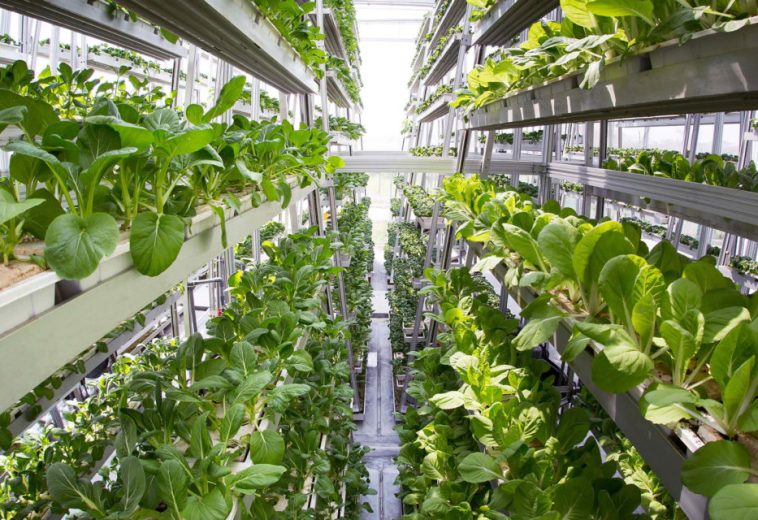The Gates Foundation invests in the Argentine company Puna Bio to encourage it to introduce its extremophiles in sub-Saharan Africa. These products are particularly suited to help crops survive in extreme environmental conditions.
The Gates Foundation is investing for the first time in its history in an Argentine agricultural startup. The company Puna Bio, recipient of this investment and specialized in agricultural biological products, is expected to use this financial support to expand its global market presence well beyond Latin America.
The arrival of the Gates Foundation as an investor will help Puna Bio expand globally “by providing solutions that can make agriculture more productive, sustainable, and resilient to the effects of climate change,” said Franco Martinez Levis, CEO and co-founder of Puna Bio.
Puna Bio’s biological products use extremophiles—microorganisms capable of developing and surviving in extreme conditions—to strengthen crops against harsh environmental conditions, such as high temperatures that affect many regions around the world due to climate change. The company integrates these extremophiles into products that are stable at room temperature, which farmers use as seed coatings.
The Gates Foundation is investing in Puna Bio so that it can distribute its products in sub-Saharan Africa and adapt them to the region’s specific conditions. The Gates Foundation has acquired extensive experience with the challenges, opportunities, and mechanisms that allow: 1) the design of tools needed by smallholder farmers in regions such as Africa and Southeast Asia, and 2) the effective large-scale deployment of these tools to amplify their impact and make them more useful. The use of extremophiles is already widespread in Latin America, especially in Brazil.
Africa is expected to follow soon.
EXTREMOPHILES IN AGRICULTURE
The use of extremophiles in agriculture is a growing field, used as follows:
- Improving soil fertility and plant growth under difficult conditions:
- Extremophile plant growth-promoting bacteria (PGPB). They help plants to:
- Fix atmospheric nitrogen
- Solubilize phosphates and other nutrients
- Produce phytohormones
- Improve stress tolerance
- Soil bioremediation: some extremophiles can degrade pollutants in soils;
- Production of biosurfactants: which improve the soil’s water retention capacity
- Biocontrol of diseases and pests:
- Biofungicides and biopesticides
- Enhancement of plant resistance
- Enzymes and bioproducts for agriculture:
- Extremozymes: enzymes produced by extremophiles can be used for specific agricultural applications, such as plant biomass degradation;
- Decomposition products: extremophiles can accelerate the decomposition of organic matter in compost
- Adaptation to climate change:
- Development of resilient crops
- Agriculture in hostile environments
Despite their enormous potential, the application of extremophiles in agriculture faces certain challenges:
- Understanding their ecology
- Large-scale production: scaling up from lab to industrial production is very complex
- Regulation
WHAT ARE EXTREMOPHILES?
Extremophiles are organisms that can survive and even thrive in environments considered extreme and inhospitable to most other life forms. For us, these conditions may seem deadly, but for these organisms, they are essential for survival.
Extremophiles are found in surprising and varied places such as:
- Deep-sea hydrothermal vents: where temperatures are high and pressure is immense;
- Volcanic hot springs: in pools of boiling water that are very acidic or very alkaline;
- Salt lakes: with such high salt concentrations that no other life can survive;
- Glaciers and polar regions;
- Deep layers of the Earth’s crust under enormous pressure;
- Very acidic or very basic environments like certain soils or lakes;
- Areas with high radiation where life is usually impossible.
How do extremophiles survive in these conditions?
Extremophiles have unique cellular and molecular adaptation mechanisms, for example:
- Specialized enzymes (extremozymes): their enzymes can function at very high temperatures, extreme pH levels, or under intense pressure, which would be impossible for enzymes from “normal” organisms;
- Protective molecules: they produce compounds that stabilize their proteins, DNA, and cell membranes against damage caused by their environment;
- Adapted cellular structures: their cell membranes and walls may have a unique composition that enables them to withstand extreme conditions.
Most extremophiles are microorganisms (bacteria and archaea), but there are also a few examples of eukaryotes, such as tardigrades (also called water bears), which are polyextremophiles capable of surviving multiple extreme conditions.
Why study them?
The study of extremophiles is crucial for:
- Understanding the limits of life;
- The origin of life
- Biotechnology: their extremozymes have industrial and medical applications;
- Exobiology: their existence suggests that life could potentially exist on other planets
In short, extremophiles are organisms that push the boundaries of what we thought was possible for life.
Source: AFN




